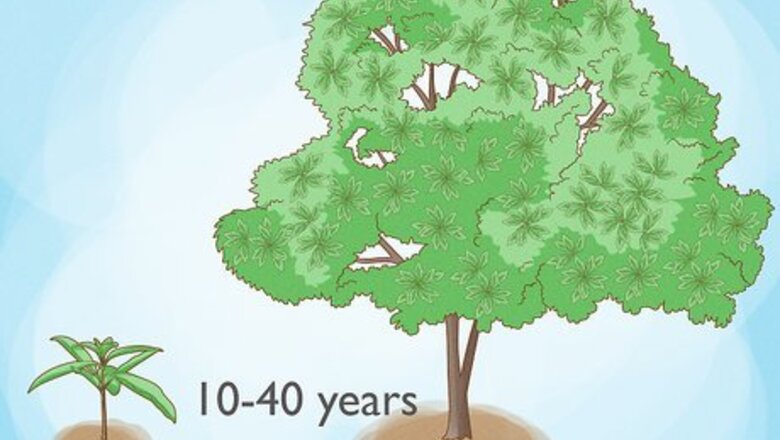
views
How long does it usually take for a tree to grow?
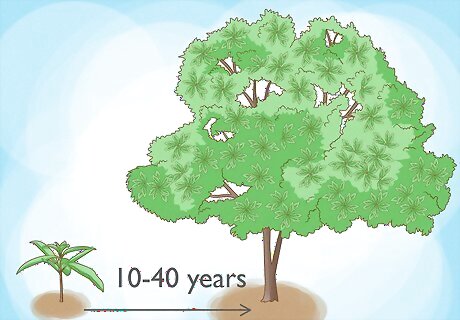
Trees reach maturity at different rates, from 10 to 40 years or more. There are a number of factors that influence how long it takes for a tree to grow and reach maturity, which explains why the answer varies so much. The influences include location, climate, species, and the growing season in the area (which differs depending on the elevation). A tree has reached maturity when it reaches the standard size for its species and climate. Once a tree has reached maturity, it will usually stop growing in height. It will continue to grow branches, sprout leaves, and grow in width until it dies.
What conditions influence a tree’s growth?
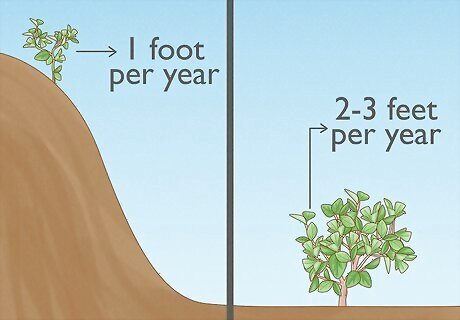
Location Depending on the elevation of the location, the area will have a different growing season. The air and soil temperature are typically cooler at higher elevations, which reduces the length of the growing season to as little as 2-3 months out of the year. At lower elevations, the warmer air and soil temperature will increase the length of the growing season to as long as all year round. If the growing season is only 2-3 months of the year (like in the Appalachian Mountains), a tree may only grow 1 foot (0.30 m) a year maximum. If the growing season is all year round (like warmer locations closer to the equator), a tree may grow 2–3 feet (0.61–0.91 m) a year.

Climate Things like sunlight, temperature, and precipitation all influence how quickly a tree will grow and reach maturity. Usually, a warmer climate will encourage a tree to grow faster. A tree will also thrive if it is growing in its native climate or an area with a similar climate to where it originated. For example, a tree that is native to Australia will grow faster in a hot, sunny environment than in a rainy, cold area. If a tree is native to a temperate rain forest in the Pacific Northwest, it will grow and thrive in a moist, rainy climate.
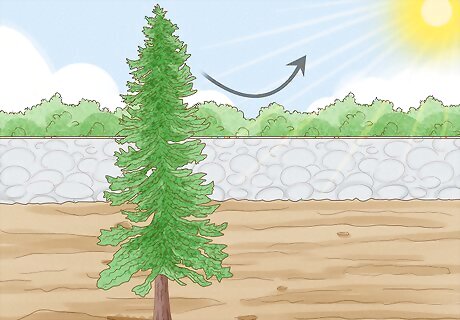
Species Depending on the species, a tree will have a different average growth rate. Each species also has its own unique needs to thrive and grow (specifically the type of soil, the amount of sunlight, and the rate of precipitation). For example, pine trees are known for growing very fast compared to other species. These trees grow toward the sun, which means they get more sunlight for photosynthesis than trees in shadier environments.
Stages of Tree Growth
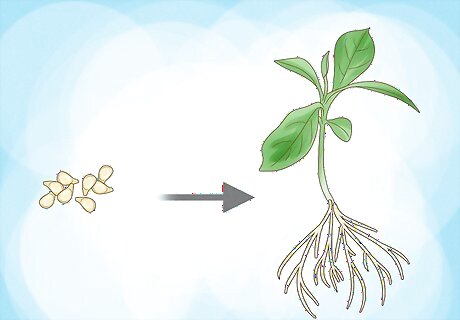
Seed As you probably know, trees begin as seeds. These seeds disperse through a variety of means, including human involvement, animals, and the wind. If the conditions are supportive of their growth, a seed will germinate and start to grow. The length it takes for a seed to germinate depends on the environmental conditions and type of tree and can take anywhere from a few weeks to a few months.
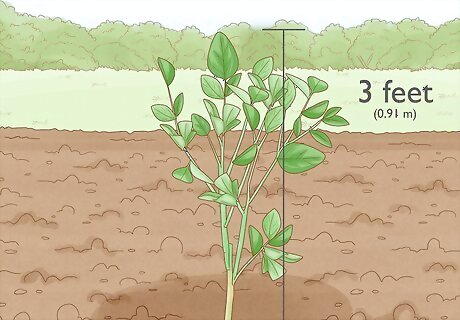
Seedling During this stage, germinates grow from the seed and begin to sprout roots that lodge the seed in place. At this point, the seed also sprouts a shoot, which pushes upwards through the soil and into the open air. A tree will remain a seedling until it grows past 3 feet (0.91 m) tall. The time it takes to grow past this length varies widely among tree species. Since this is such an early stage of a tree's life, it is a vulnerable time for the tree.
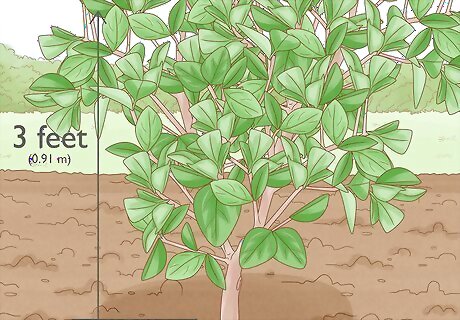
Sapling This stage marks when the tree has sprouted forth through the ground and begun to resemble a tree. A tree reaches this stage when it grows past 3 feet (0.91 m) tall. During this time, the tree will grow quite fast. Trees with longer life spans (including yews and oaks) will remain in the sapling stage for much longer than trees with shorter life spans (wild cherry and silver birch trees, for example). A tree does not produce seeds or reproduce during the sapling stage.
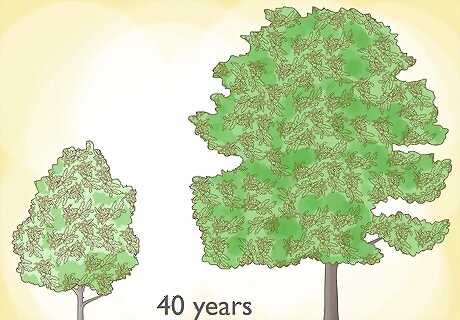
Maturity This stage describes when the tree has reached the standard size for its species and climate. The length of time it takes to reach maturity depends on a number of factors (like species, climate, and precipitation). An English oak tree, for example, reaches maturity after about 40 years. It will stay in this stage for about 80 to 120 years in total. A rowan tree may reach maturity in as little as 15 years. It may complete its entire life cycle and reach its decline in 120 years total.
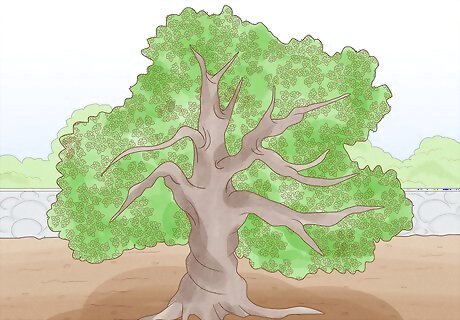
Ancient A tree grows out of maturity and becomes an ancient tree when its life span has passed other trees in its species. The length of time it takes to become ancient depends on a tree's species, since each one has a different usual life span. In general, an ancient tree will have a much wider trunk that is potentially hollow. It may also have a smaller canopy (the branches, leaves, and stems at the top of a tree). A rowan tree may reach the ancient stage in as little as 100 years or so. A yew tree may take over 1,000 years to reach the ancient stage.
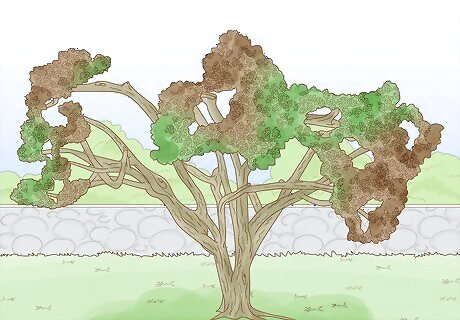
Decline A tree may reach its decline if it is met with environmental factors like diseases and harmful insects. It may also reach this stage if there is a competitor tree nearby that is taking its nutrients. The time in which it will reach its decline varies on these unique conditions and when they appear. A tree may also decline or die due to environmental factors like wildfires or hurricanes. Even when it reaches its decline, a tree will remain an integral part of an ecosystem. It may become a source of shelter for insects, birds, bats, and other small creatures, for example.
Ways to Encourage a Tree to Grow
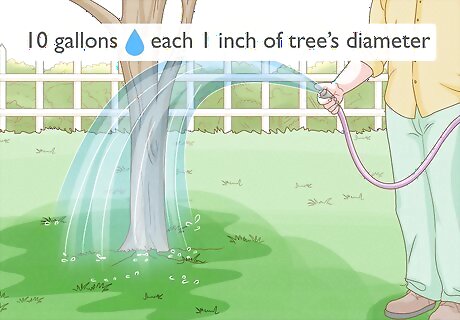
Watering When taking care of a tree, it's important to make sure it gets enough water to thrive and grow strong. Though this ultimately depends on the weather in your area (like how much it rains), a tree generally needs 10 gallons (38 l) of water for each inch (cm) of the tree's diameter. How often you water depends on the amount of rainfall in your area, which can supplement your watering. Generally, water your tree 2 times a week in the first 2 months of its life. Then, water once a week.
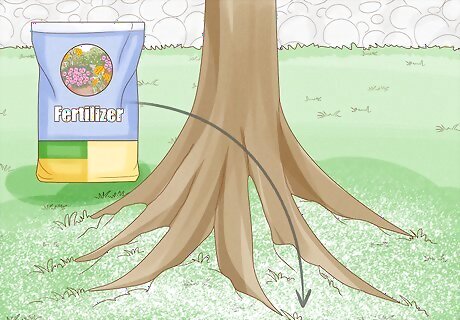
Fertilizer Layer the soil with fertilizer to give your tree the nutrients it needs. The fertilizer you choose depends on the specific tree, but a typical fertilizer will include nutrients like nitrogen, magnesium, and phosphorous. To learn what nutrients the tree you've planted needs to thrive, search for a community tree guide online or use the Arbor Day Foundation tree database. A tree guide can tell you where the tree you planted originated and what soil is typical in that location. That can give you an indication of how you can alter the soil with fertilizer to give your tree the nutrients it needs.
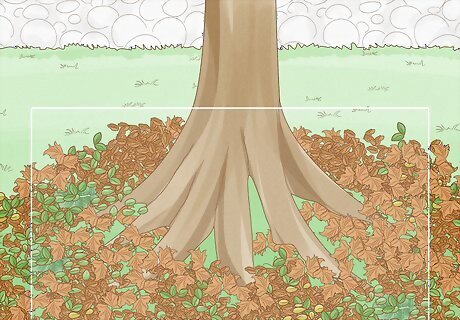
Mulch Layering mulch, like wood chips, bark, or even fallen leaves can keep your tree healthy. Mulch prevents weeds from growing near your tree and can also help the soil conserve moisture. Purchase wood chips to layer over the surrounding soil near your tree. As a free alternative, contact a local tree service in your area to find free wood chips or use any fallen leaves you can find in your yard.


















Comments
0 comment